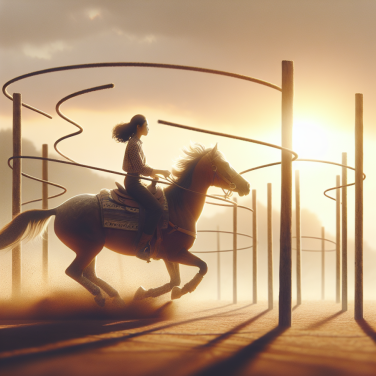Perfecting Skills for the Battlefield: Key Strategies in the Sport of Paintball
Perfecting your paintball skills requires regular training while understanding key battlefield strategies. It's not merely about shooting; it involves a combination of teamwork, tactical awareness, accuracy, communication, and a bit of athletic ability.
A significant part of paintball gameplay is tactical planning. It's essential to understand your surroundings on the battlefield. Knowing your terrain can give your team an advantageous position and help strategize your approach. Whether you are playing in a forest, an open field or a dedicated paintball arena, you need to be aware of possible cover spots, enemy lines, and escape routes. Planning ahead can often be the difference between victory and defeat.
Communication is another facet that can’t be overlooked. Many newcomers to the sport think it's all about running and gunning, but communication with your team is crucial. Simply knowing the positions of your team and the opposing team can tilt the match in your favor. Developing a system of signals or codes can allow for quick and effective communication under the duress of gameplay.
Training your aim and accuracy is also incredibly important. While having a high-quality paintball marker can help, your skill in handling the equipment is pivotal. Practice targeting in various conditions. Try quick draw shooting, shooting while moving, and long-range shots. Remember, being able to hit your target is a huge strategic advantage.
Just like in any sport, physical fitness contributes significantly to your paintball performance. Regular running or cardiovascular exercise can tremendously improve your agility and endurance on the field. Incorporating strength training can help with the long periods of carrying heavy equipment or in situations where you need to quickly maneuver out of tricky spots.
A common mistake made by novice players is getting too comfortable behind cover. Yes, taking cover is vital to avoid getting hit, but maintaining mobility keeps the opponent guessing and creates opportunities for your team. Try and keep moving throughout the match, but do so strategically. The ability to transition quickly from offense to defense can catch opponents off guard, opening up opportunities for your team.
Finally, understanding your equipment, such as your paintball marker, is essential. Make sure you know how to handle jams and malfunctions swiftly. Familiarize yourself with the range, accuracy, and the reloading process of your marker. This knowledge would increase efficiency and productivity on the battlefield.
Paintball is more than just shooting paint; it's a sport with a lot of strategic depth.
Read also:
Decoding the Price: How Much do Golf Clubs Really Cost?
Understanding the High Adrenaline World of Competitive Paintball
Competitive paintball is a high adrenaline sport that requires a combination of strategic ingenuity, physical dexterity, and intense focus. Utilizing a game format that involves players using guns loaded with paintballs to tag their opponents, paintball has evolved into a globally recognized sport, complete with professional leagues, regional and international tournaments, and a massive following of enthusiasts.
Fundamentally, competitive paintball is centered around two opposing teams, each charged with accomplishing a predetermined objective against the odds. Whether the mission is to capture the enemy's flag, eliminate the entire opposition team, or secure a particular location in the paintball course, participants are geared for an all-out war.
One of the significant attractions of competitive paintball is its fixation on wargame-based strategies. Participants put their tactical prowess to the test, designing and executing strategic maneuvers that assure team advantage and individual success. Competitors must duck and dive, zig, and zag, unleashing their inner warrior to outwit opponents and navigate the battlefield.
Competitive paintball takes a high level of physical fitness and athletic prowess. Players need to sprint, dodge, dive, crawl, and kneel, combining fast-twitch reflexes with muscular endurance. It's not enough to simply run and shoot. Instead, the sport demands a high level of coordination; players must simultaneously aim and fire, run and dodge, and tactically communicate with their teammates.
Mental resilience is also a crucial aspect of competitive paintball. The ability to make split-second decisions under duress can mean the difference between victory and defeat, especially in high-stakes tournaments. Players must learn how to maintain composure under fire, accurately assessing situations and rapidly developing appropriate responses. It's in these intense moments that the warrior mentality becomes exceptionally key.
Given the sport's popularity, competitive paintball has seen the establishment of professional leagues that observe standardized rules and regulations. This, coupled with the sport's intricate game mechanics, ensures a high level of competitiveness, making competitive paintball much more than a simple backyard pastime.
Becoming a competitive paintball player takes hard work, dedication, and a lot of practice. Physical conditioning and tactical training are all necessary to remain competitive. But most importantly, it's about embracing and refining the warrior spirit, that internal drive that pushes you to outmaneuver, outsmart, and ultimately dominate the battlefield.
Lastly, apart from its physical and mental demands, competitive paintball fosters camaraderie and promotes teamwork.




